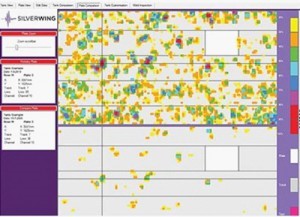


Magnetic Flux Leakage (MFL-3d Version)
Magnetic flux leakage (MFL) is a magnetic method of non-destructive testing that is used to detect corrosion, pitting and wall loss in steel structures.
Magnetic flux leakage (MFL) is commonly used for inspecting tank floors in the petrochemical industry. Corrosion of the tank floor can lead to the loss of product and cause damage to the environment. Therefore, it is vital that tank floor inspections are carried out in order to prevent the occurrence of such problems.
MFL provides a cost-effective and high-speed inspection of tank floors. Our qualified MFL inspectors are backed by years of experience. We use MFL equipment such as Floormap VS2i and Floormap 3D. The method uses permanent or electromagnets to magnetise the tank floor and the resulting magnetic field changes are recorded and analysed. If there is corrosion, pitting or wall loss, the magnetic field ‘leaks’ and the ‘leakage’ is analysed to determine the location and severity of the defect of the tank floor – both near and far surface. A map of the corroded areas is provided with the MFL method and this essential data can be stored for future reference and planning.
The metal bottom of a tank can produce an unnecessary inspection and maintenance effort in comparison to its initial cost. This reflects the difficulty in detecting corrosion of the tank floor, especially on the underside. This in turn can give rise to an insidious loss of product and damage to the environment with the inevitability of a reduction in profits.
Merits of MFL Tank Floor Inspection

+91 63839 92501
admin@u-sonix.com